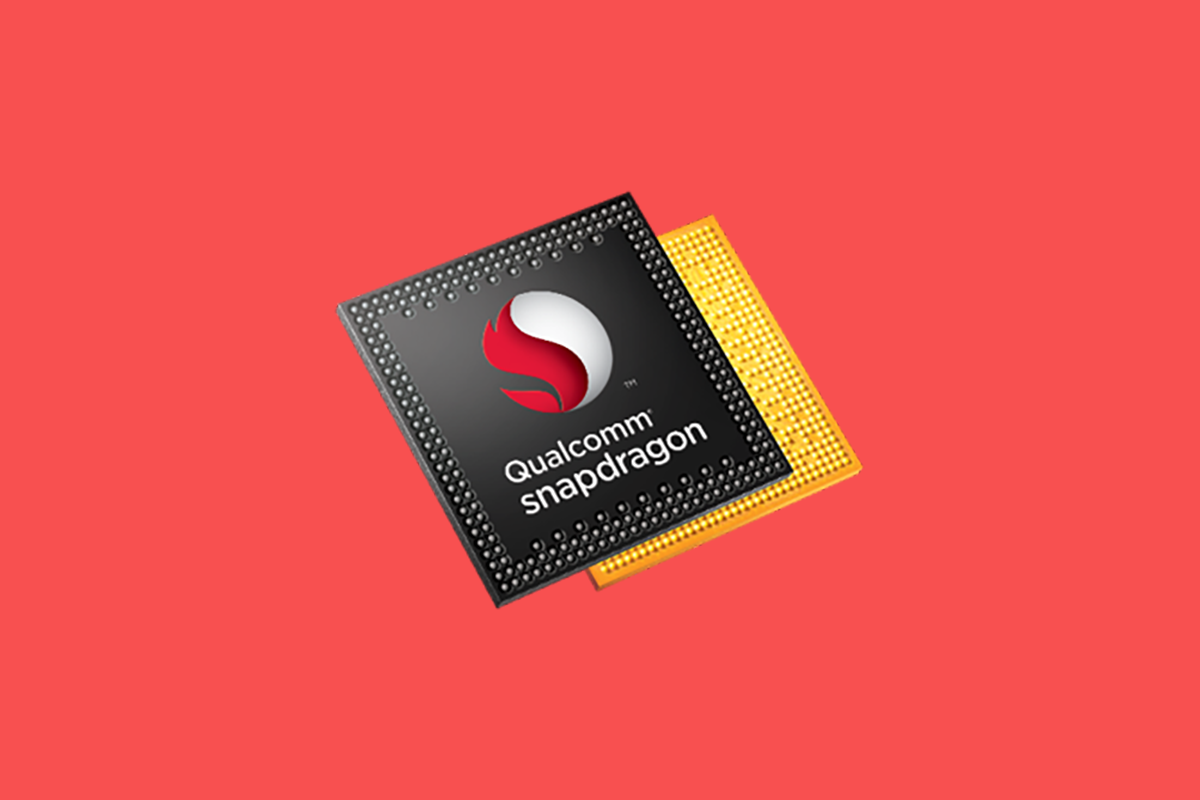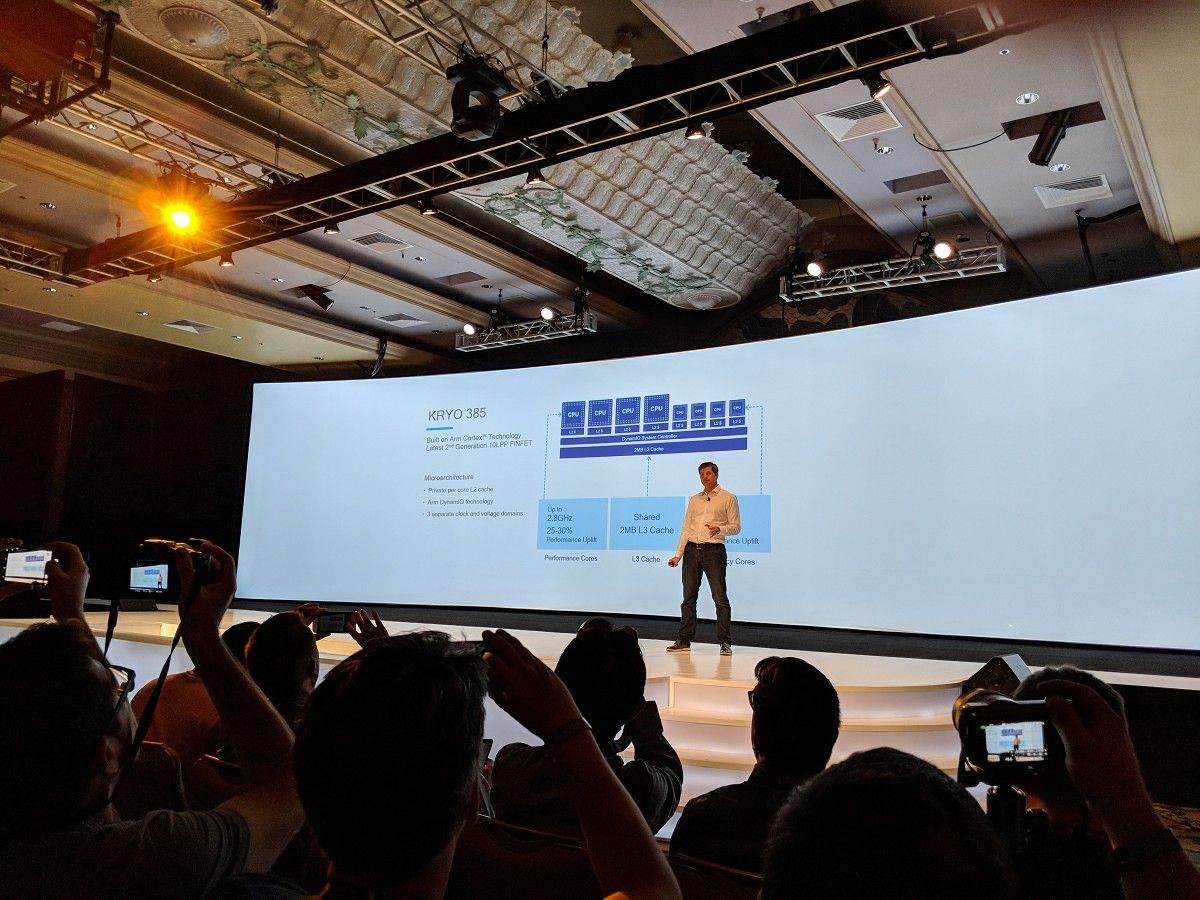Yesterday, Qualcomm unveiled its next-generation flagship processor for flagship devices: The Snapdragon 845. It confirmed that Samsung Foundry would fabricate the chip on a 10nm process, and on Wednesday, Qualcomm revealed more details about the new system-on-chip, including the specs of the second-generation Spectra ISP and Hexagon 685 DSP. It also detailed its brand-new Kyro 385 architecture, which boasts significant performance improvements over last year's Snapdragon 835.
The background: The Snapdragon series's chip architecture, which uses custom CPU cores based on ARM's designs, has improved by leaps and bounds over the past decade. Qualcomm's Scorpion CPU core was followed by its custom Krait CPU core, starting with 2012's Snapdragon S4. In 2015, Qualcomm moved to a combo of 64-bit stock ARM Cortex-A57 and Cortex-A53 cores in the Snapdragon 810 and 808, retiring Krait in the process. But only a year later, Qualcomm was back in the custom CPU core game with the Snapdragon 820. It marked the debut of Kryo, which featured a heavy emphasis on floating point IPC (Instructions Per Clock) in terms of single-threaded performance.
The Kryo's CPU performance and power efficiency improved on Qualcomm's implementation of the ARM Cortex-A57 in the Snapdragon 808 and 810, but according to benchmarks, it couldn't match ARM's 2016 core, the Cortex-A72, in terms of integer IPC. Kryo moved ahead when it came to floating point IPC, though.
Then, with the Snapdragon 835, Qualcomm changed things again with "semi-custom" CPU cores. The Snapdragon 835 featured Kryo 280 "performance" cores that were faster than their fully custom predecessors in terms of integer instructions per clock (IPC), but regressed in terms of floating-point math (FPM). But the Snapdragon 835 remains one of the fastest system-on-chips in the Android market.
But a new chip is poised to dethrone it. Qualcomm revealed that its next-generation flagship system-on-chip, the Snapdragon 845, features eight Kryo 385 CPU cores, with four A75 "performance" cores paired with four A55 "efficiency" cores. The Kryo 385 cores were designed on the ARM Cortex license Qualcomm first used on the Snapdragon 835's Kryo 280 cores, and they're fabricated on a 2nd-generation 10LPP (Low Power Plus) FinFET process.
The cores have a private per-core L2 cache, and a shared 2MB L3 cache. They use ARM's DynamIQ tech, which was announced by ARM in May as the successor to big.LITTLE, and they have 3 separate clock and voltage domains.
The Kryo 385 "performance" cores, on the other hand, are clocked at up to 2.8GHz, up from the Kryo 280 in the Snapdragon 835, which were clocked at up to 2.4GHz. Qualcomm's promising a 25 - 30 percent performance uplift for the "performance" cores and a 25 - 30 percent overall improvement in power efficiency.
The "efficiency" cores, on the other hand, are clocked at 1.8GHz. According to Qualcomm, they're 15 percent faster than the last generation. The semi-custom cores are based on the ARM Cortex-A55, and Qualcomm's promising that its heterogeneous compute platform, which leverages the combined processing power of the Snapdragon 845' Adreno GPU, Hexagon DSP, and Spectra ISP, substantially increases performance and power efficiency.
The Snapdragon 845 also features Qualcomm Quick Charge 4.0, which can charge a smartphone battery 0 to 50 percent in 15 minutes. Quick Charge 4.0 is a compatible superset of USB PD, which means that a Quick Charge 4 charger will also charge USB PD compatible devices.
Qualcomm's positioning the Snapdragon 845 as more than just a processor and a powerful GPU. It's rebranded it a "Mobile Platform," and it's not hard to see why -- given the improvements in the ISP, DSP and more, Qualcomm's new chip does just about everything.
But the CPU is arguably still the most important element of a system-on-a-chip. And at first glance, it's exciting to see Qualcomm promise as much as 25 - 30 percent improvement in performance in the Kryo 385 "performance" cores. Considering how good the Kryo 280 cores already were, we have no reason to doubt that Kryo 385 is every bit as impressive as the chipmaker says, but we'll have to conduct our own tests before we can say for sure.
Editor’s note: These are our initial impressions of Qualcomm’s Snapdragon 845 platform -- we haven’t had time to put it through its paces yet. Rest assured, we’ll follow up our “hot take” coverage with more thorough, detailed looks at the new system-on-chip and all of its features.


